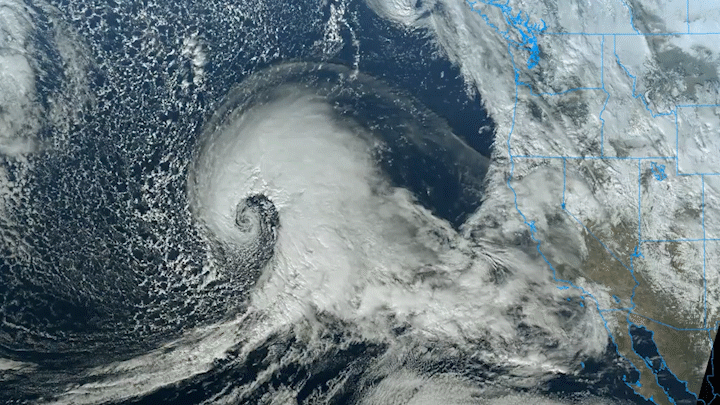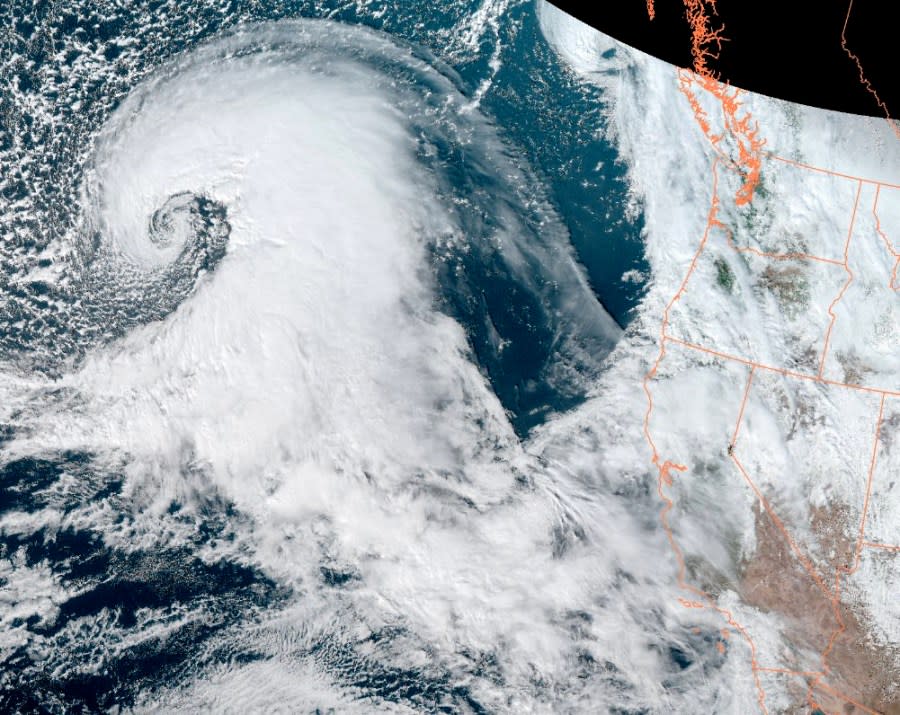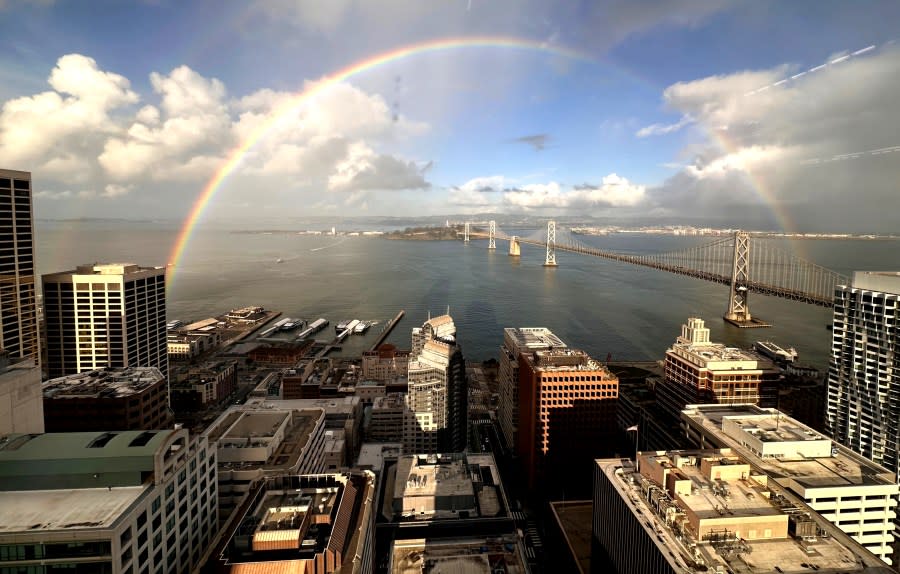KRON4 Meteorologist explains bomb cyclones and ‘bombogenesis’
SAN FRANCISCO (KRON) — Attention-grabbing weather appeared around the Bay Area this week as a possible tornado formed near Petaluma in Sonoma County Thursday and a magnificent rainbow shimmered above the City of San Francisco.
Another big storm wielding an atmospheric river is barreling toward the Bay Area on Sunday. One weather phenomenon, a bomb cyclone, has not occurred in our region yet so far this winter. The very nature of a bomb cyclone, a storm that rapidly intensifies with a sudden drop in pressure, makes it notoriously tricky to forecast.
KRON4 Chief Meteorologist Lawrence Karnow explained what bomb cyclones are, and if Sunday’s storm could usher one in.

Is there potentially a bomb cyclone in the forecast for the next storm?
Karnow said, “There is still a lot of uncertainty to the exact strengthening of our weekend storm. If it were to become a bomb cyclone, it would be the first this year. Bomb cyclones only refer to the rapid intensification of a storm. An atmospheric river is a storm that latched onto subtropical moisture — all the way from the Hawaiian Islands — and delivers it to the West Coast. It is also possible that a bomb cyclone could also be an atmospheric river event too if it entrains subtropical moisture and undergoes bombogenesis. There is that possibility with the next storm approaching the Bay Area late this weekend.”

What does Mother Nature need to do to create a bomb cyclone?
Karnow explained, “A bomb cyclone refers to a rapidly intensifying storm within a 24 hour period. That process is known as ‘bombogenesis.’ To be declared a ‘bomb cyclone’ the storm’s pressure must fall 24 millibars in 24 hours. It’s caused by an area of low pressure where the air at the surface begins to rise in the center of the storm. If the air spirals upward to the top of the storm faster then it can be replaced at the bottom of the storm, the pressure will fall rapidly. If it falls 24 millibars in 24 hours, it will become categorized as a bomb cyclone.”

Why are bomb cyclones cool to weather nerds?
Karnow replied, “I can’t speak for all weather nerds, but I find them fascinating due to the rarity and intense power. In general, the lower the pressure of a storm, the more powerful it is. And they can develop so fast. Bomb cyclones can cause extreme weather … and sometimes winds as powerful as a category 21 hurricane.”
For the latest news, weather, sports, and streaming video, head to KRON4.

